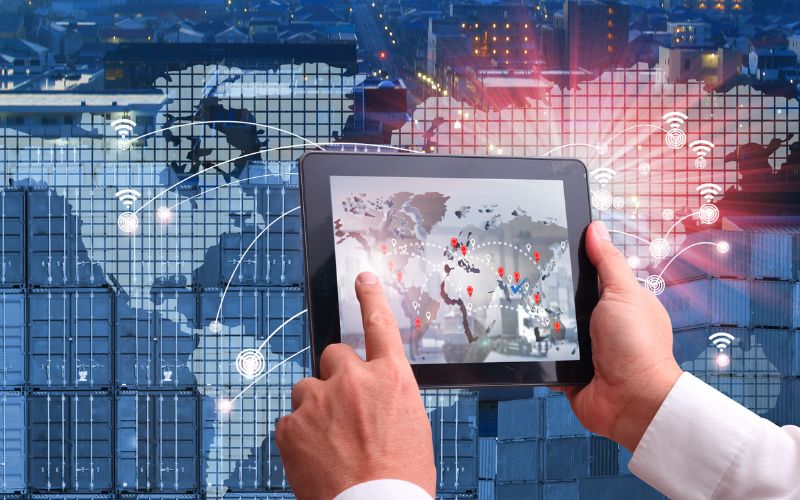“India’s logistics sector is now moving towards a future powered by instant data smooth connections, and clear digital systems. The Indian government’s focus on digital tools is driving this change.” Arvind Devaraj, COO, NLDSL
India’s logistics sector, often called the backbone of the economy, is changing in big ways. In the past, it struggled with slow processes, delays, and scattered operations. Now, it’s moving towards a future powered by instant data, smooth connections, and clear digital systems. The Indian government’s focus on digital tools is driving this change. This shift is helping goods move more, speeding up customs checks, and letting people make smarter choices across the whole supply chain.
The Foundation
PM Gati Shakti – National Master Plan launched in October 2021, forms the basis for the digital shift in India’s logistics system. This big infrastructure plan aims to bring 16 ministries to a single digital platform. This allows for joined-up planning and teamwork in carrying out infrastructure projects that connect different parts of the country. The Unified Logistics Interface Platform (ULIP) came about under this plan. It breaks down barriers in logistics data, supports transport across different modes, and helps to see operations more. ULIP serves as a digital doorway. It joins datasets from many government departments and private parties through safe APIs. This gives stakeholders the power to make choices based on real-time data.
The Drive Towards Digital-First Logistics
Unified Logistics Interface Platform (ULIP) created under the National Logistics Policy, plays a crucial role. It combines data from different ministries, port authorities, and private logistics companies giving a clear view of the whole supply chain. Other projects like the e-Way Bill system, RFID-based FASTag, and digital rail freight management systems have already made a difference. They’ve cut down travel times, stopped theft, and made following rules easier.
Driving Efficiency Through Interoperability
Perhaps the greatest single logistical challenge throughout history has been the isolated nature of operations and the data sharing policies, or lack thereof, between stakeholders. Digitalization is addressing this challenge by promoting interoperability both between transport modalities and amongst private and public players. ULIP, for example, enables providers, fleet owners and shippers to access real time multimodal logistics information through secure APIs, improving planning and reducing idle time. This advancement also lowers the overall costs of logistics.
Reducing Bureaucracy and Increasing Transparency
Traditionally, customs clearance as well as cross-border logistics have been extremely paper-intensive. Technological advances are now enabling time-saving measures such as automated document submission, electronic signatures, and consolidated customs portals. This leads to less human interaction, faster clearances, and improved trade trust.
Moreover, digital frameworks are assisting small to medium-sized logistics firms – previously un digitized – with the national network access, shipment tracking, and competitive service provisions without having massive infrastructural expenditure.
Why the Private-Public Partnerships Matter Most
The use of technologies in logistics cannot be only the burden on the shoulders of the government. For something to be created, there should exist an environment consisting of private businesses, emerging businesses, and other tech companies. The open-architecture policies concerning ULIP adopted by the government is a proof of the integrative spirit model since it permits interfacing by standardized APIs. Corporations are now adding functionality to government infrastructure systems by addressing value-add challenges presenting on governments infrastructure systems dashboards, predictive analytics, visibility measures, and working with their infrastructures.
Remaining Challenges
While the progress is promising, we still face a variety of challenges ahead including data standardization, digital literacy among smaller players, and infrastructure in remote areas. We will need to keep an eye on cybersecurity and data privacy as more players plug into shared platforms.
Conclusion – Forward Thinking: Digital-First Logistics
The pathway to a digitally empowered logistics industry is underway, and we can see the initial benefits. With sustained government initiative, and industry cooperation, India is on the path to developing not just an efficient logistics sector, but a globally competitive logistics system. The future can involve increased access to digital technologies, creation of new products and services, and ensuring that everyone along the way from port operator to truck driver, to warehouse clerk realizes its benefits.
The author is Arvind Devaraj, COO, NLDSL
About NLDSL: Established on December 30, 2015, NICDC Logistics Data Services Ltd. (NLDSL) is a joint venture between the Government of India, represented by the National Industrial Corridor Development and Implementation Trust (NICDIT), and Japanese IT major NEC Corporation, with equal equity participation. NLDSL aims to enhance efficiency, transparency, and digitization within India’s logistics sector by leveraging advanced Information and Communication Technology (ICT) solutions.

